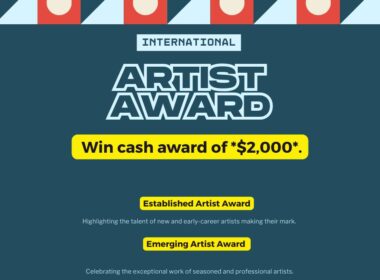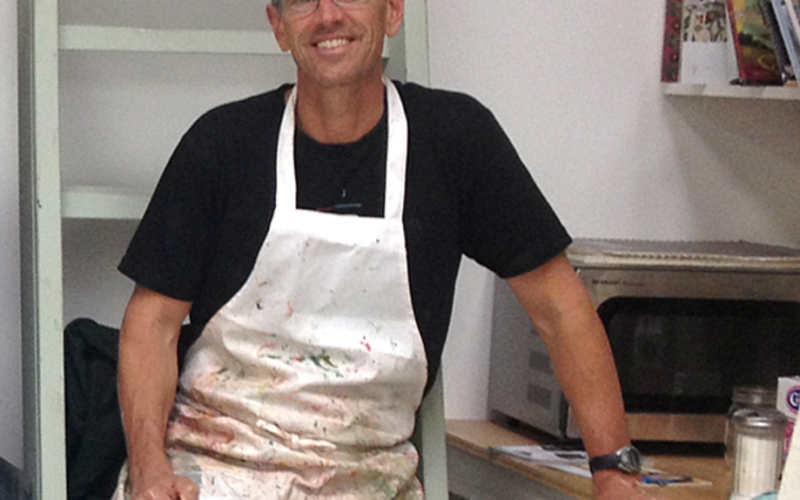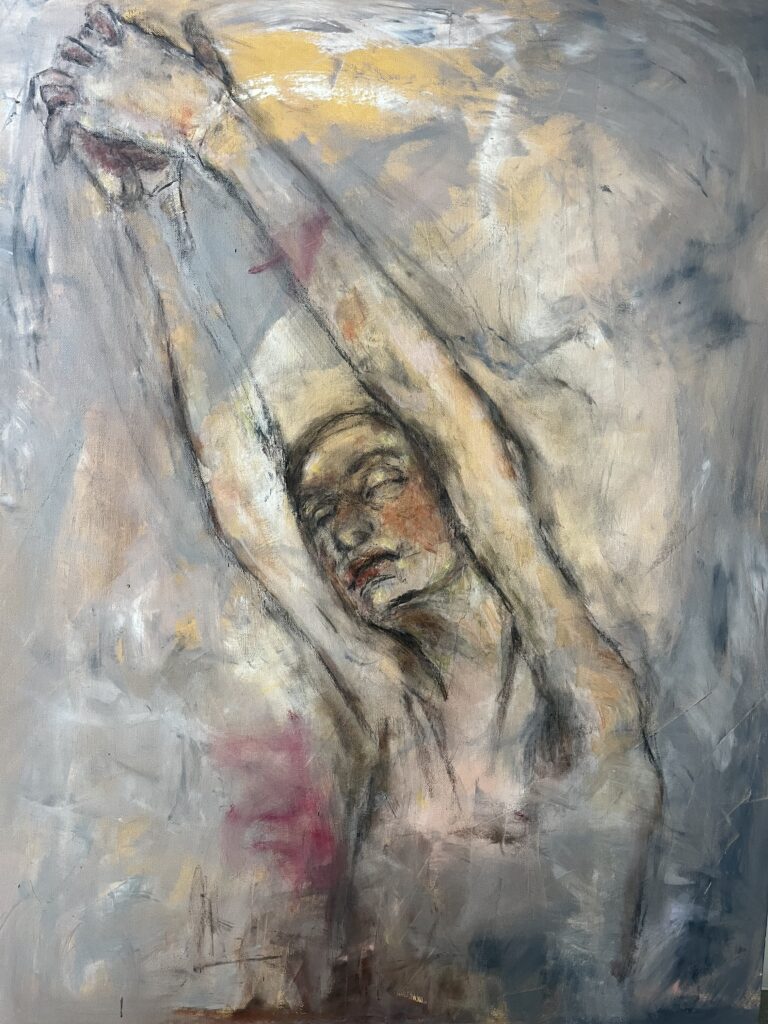
Alexandra Saunder’s Portraits of Rescued Wildlife
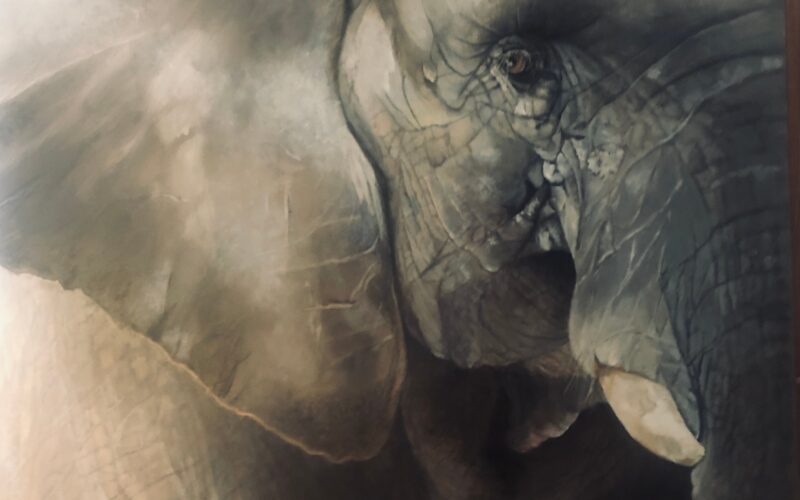

Alexandra Saunders is a contemporary wildlife artist in the San Francisco Bay Area. Her work is drawn from her love of the natural world and intimate portraits of animals she has encountered as a lifelong wildlife conservationist. Since childhood, she has sought refuge and sanctuary in nature by communing with and surrounding herself with animals. Alexandra started her career as an artist in 2020 after a life-changing event in the pandemic and ever since has not looked back. Alexandra made a major career switch in her seventies. She showcases animals and helps raise funds for conservation and sanctuaries. Then she painted portraits of chimpanzees rescued by conservationists and living in chimpanzee sanctuaries in Africa. And now she is working with 6 different sanctuaries in Africa, Asia, and the United States.
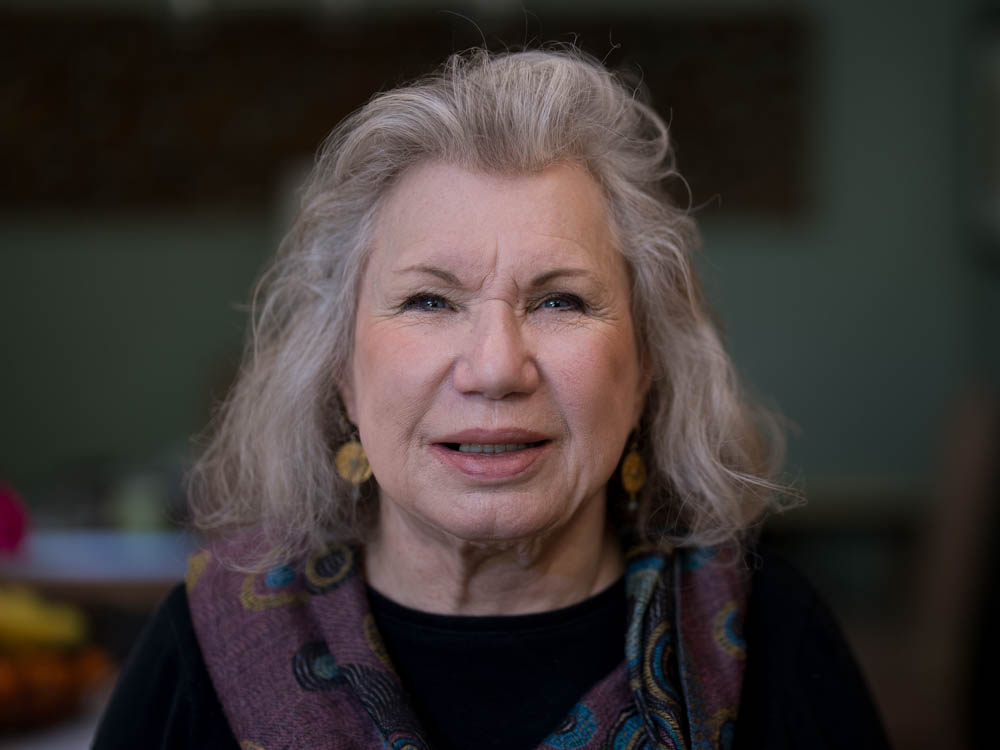
In conversation with the artist Alexandra Saunders, a wildlife conservationist. In this interview, Alexandra shares how she embarked on this beautiful journey, and how she struggled from learning to hold a paintbrush to master the Art. Alexandra also shares some hiccups she faced as an artist starting her career in her seventies. Join us in this interesting interview where Alexandra shares her heart out.
1. Alexandra, I love your animal portraits. I am curious to know how you embarked on this journey as a wildlife artist.
Thank you! That means a lot to me when someone loves my animal portraits. I have loved animals ever since I was a little girl growing up in Tennessee where my father worked as a physicist in The Atomic Energy Commission. I had about 30 guinea pigs, and probably as many mice, a turtle, a duck, and a dog. Rather than playing with other kids, I loved to go into the woods, play in the streams, and collect frogs to bring home. In college, I studied wildlife conservation and worked at Lawrence Berkeley Lab, in energy as a research scientist. I would have loved to learn scientific illustration but I never got the chance —- though looking back that would have been a logical step for me. But I ended up putting all of that away in my late 20s and pursued a business career. (Which was strange as I always felt like a fish out of water) It wasn’t until the pandemic that I retired after 45 years and picked up a pencil to learn how to draw and illustrate wildlife just to express my love and passion for them and all of nature.
2. Your portraits are photorealistic and gorgeous. What has your journey been like in perfecting this incredible skill?
Hahaha. I’ve got that perfectionist streak in me that will not let me rest until I have the proportions and lighting right. I began my journey in March 2020 with a graphite pencil and some old paper. I found a book by the extraordinary artist Mike Hinley who teaches you how to draw and begins with the basics like how to sharpen your pencil, how to lay down tones, and how to create values. Really really basic stuff. How to draw. Period. He taught me how to train my brain to connect for brain eye-hand coordination, and in scale. The most difficult drawing I have ever done was a 6“ x 4“ intricately detailed drawing of a wolf in graphite which took me a good 40+ hours. After a year of just graphite work, I picked up some colored pencils, and then some pastels to learn how to translate my graphite drawings into color. That was a trip, haha. During that period in 2021, I began to perfect my colored pencil drawings, but I became very frustrated because one drawing could easily take me up to 100 hours or so. I wondered how Artists could ever make a living since I didn’t know that colored pencil drawings could sell for much ( I’ve since learned that is wrong). By then, I was spending a lot of time on the Internet seeing what other artists were doing and I discovered there were other artists like myself, who were committed to conservation and called themselves “wildlife conservation artists” donating proceeds from sales of their work. That fits perfectly for me.
My work attempts to portray the innocence of some very special non-human individuals. My pieces are intimate portraits of them; they, like us, have a reason and a right to exist.
Artist Statement
My entire life has been about my love for animals and abhorrence of animal cruelty. And of course, I have always loved art from the time I visited my first museums with my family girl. So, even though today I am a senior in my late 70s, I have discovered for the first time in my life what I was meant to do!! In late 2021 I took the plunge and purchased online enough oils and canvases and brushes to last a lifetime. Then, when they all arrived, I discovered to my shock that I didn’t know how to hold a brush, didn’t know how to paint on an easel, didn’t know anything about color theory … or mixing colors …. or even how to clean my brush! I was so angry at myself for all the money I had spent and wasted. I was even more disgusted with myself than I would even dare think that I could paint. I was despondent and distraught. I asked myself “How could I be so stupid?” After about 3 months of staring at my unused oils and brushes, I forced myself to pick up a brush. I was so mad at myself that I forced myself to learn. I recalled how I had learned to draw with one stroke at a time- experimenting with dipping it in the paint, then using the tips, then the belly, then dry brush. All on paper. Hundreds of pages of brush-marked strokes later over about 3 months I began to learn and pick up the confidence to use a canvas. . Today – 2 and a half years later I cannot believe I ever lived my life without painting. I paint every day for about 5-7 hours a day 7 days a week. For me, it is like breathing. It is life. I will paint till the day I take my last breath.
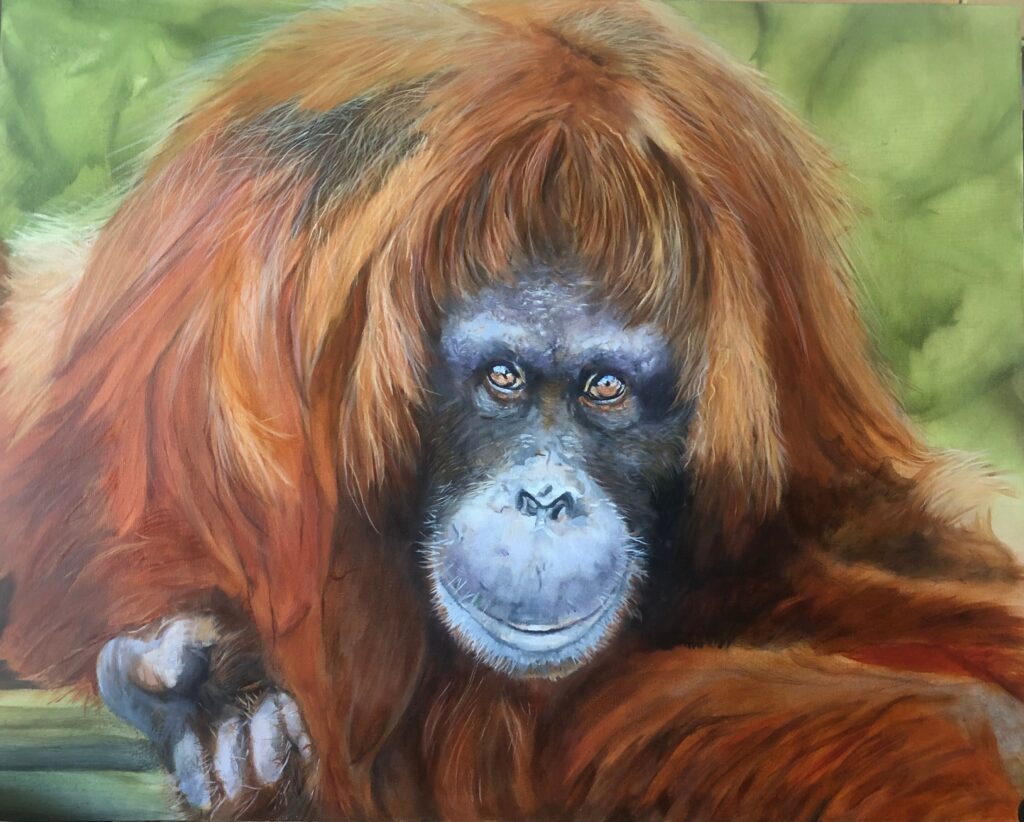

3. Alexandra, are there any major life events that have influenced your work?
Many – too numerous to count. Just a few key ones were in my childhood. I was lucky to have a dad who exposed me to the wonders of the earth and how to explore. He moved our family to Java to teach at the University there when I was 6 — so I got to travel and see the world through an extraordinary lens. We always visited museums which instilled in me a love for art. When I got older I was at the University of California at Berkeley, which taught me critical thinking skills and how to analyze and problem-solve. This has been a valuable tool for me, especially when I get stuck. I tell myself “You can do this. Figure it out. Go back to the basics – analyze each inch “ And then I spend the next few days doing just that. Taking it just one stroke at a time. I’m exceedingly patient and detailed that way. Though I left the world of science and didn’t pursue my love of art all those decades, I suppose in many ways- now that I’m back- it has made me so, so appreciative of all the extraordinary wonder in our universe that is my source of inspiration. There is so much beauty that I want to share with people and so much I want to share about the amazing wildlife that surrounds us.
4. Alexandra, your portraits have such unique stories, stirring a lot of emotions. How would you describe your work in three emotions?
Passion. Love. Wonder
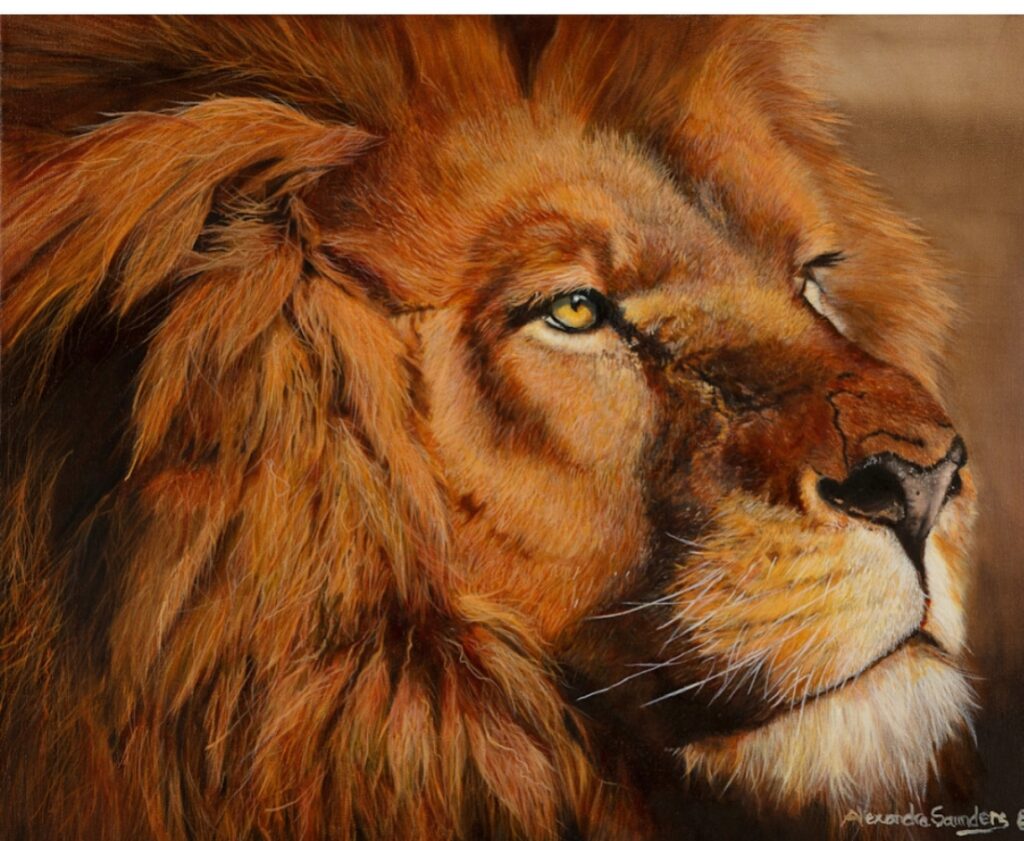
5. What are some of the hiccups you faced while starting as an artist and how did you overcome them?
That never-ending chatter questioning myself, always nagging me because ‘ who’s going to see it anyways’, “you’re old and it’s too late’ … on and on it goes… Also, I’m guilty of comparing my work to others and discounting myself. How do I deal with it? Every day, I listen to podcasts to learn from other artists too. I wish I could reach out to every one of them to see their work in person and see them as paint draw or sculpt! I listen to songs of nature too. That inspires me and takes me out of my head and into my heart. I paint every day all day despite all the noise in my head, just because I am compelled to do so for my love of wildlife and nature. I’ll never stop – even if my work piles up in my home. The other obstacle I face is representation – or lack thereof. I would love to exhibit my work so that I can sell more and donate more to conservation. That’s critically important and motivating for me. Despite my fear and being an unknown, this year I am working up my courage to reach out to galleries that represent wildlife art – and natural history museums/venues so they can see my work and exhibit my pieces. I really want this to happen and will work to make it so.
6. What excites you the most about creating your work?
Oh my. There are endless stories to tell of animals and who they are. These are just waiting to be told. I love the process at the beginning where I get to draw detailed drawings of the animal(s) I am depicting on my canvas, and then begin to lay in the underpainting. I love doing the underpainting and working on that stage for days… sometimes weeks. I am very process oriented so I love working on my paintings over a two to three-month period. My favorite other times are when I am glazing a section .. or some hairs. Glazing makes magic happen:) Then when my painting is all done I get excited about having brought that animal to life on my canvas and told its story.
My goal as a wildlife conservation artist is to commemorate and memorialize the wonder of whom I am painting so that I may bring them to life for the people who view my art.
Artist Statement

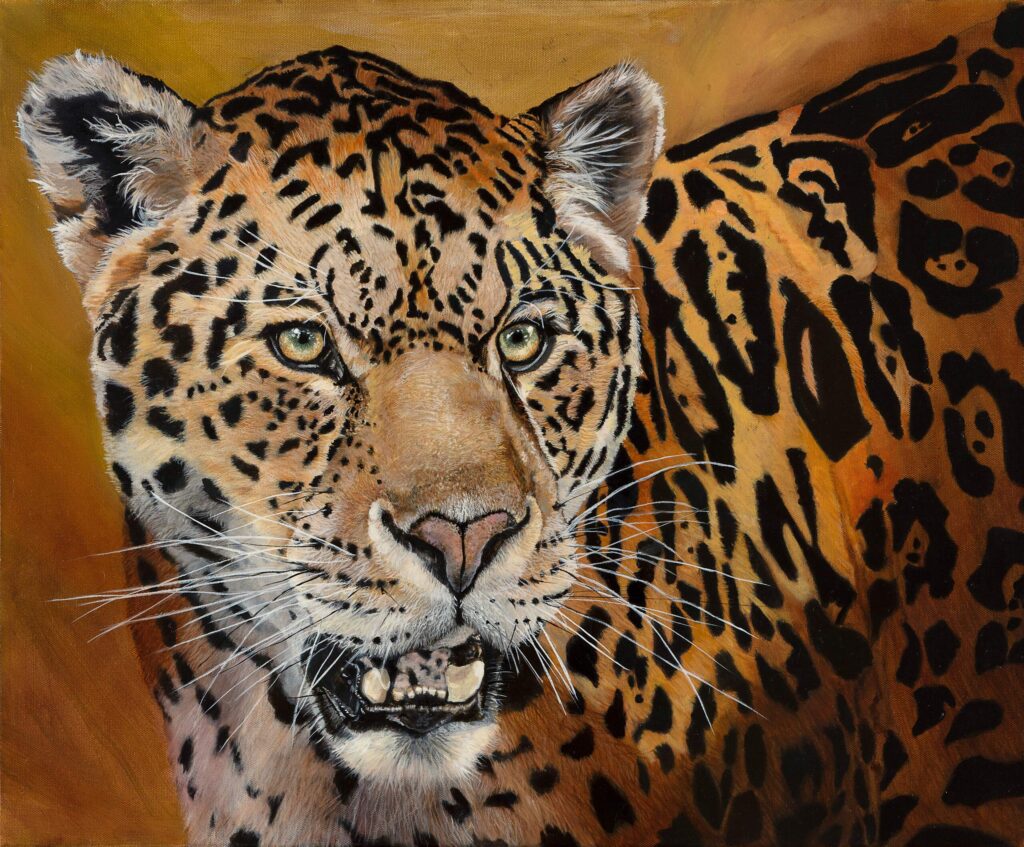
7. What advice would you give to the artists starting in their career?
Art comes from your soul and your being. So paint/ draw/sculpt/craft something you love and are passionate about. It will always reflect your source and your uniqueness in the world. Learn and refine the fundamentals and skills of drawing so that you can represent what you are thinking. Always – every day – make time for your art making. It is a sacred time and you need to honor that. It’s a pure expression of what you brought forth. Every artist has a beginning. Becoming an artist is a path – not a destination. Honor that and when you get frustrated, stop and put away the piece you are working on. Go back to it later. You’ll see it through fresh eyes. I do this all the time – that’s why I work on 3-4 pieces at a time. They evolve over time. They – and you – need to breathe. To quote something someone told me years ago, “You can never open a rose with a hammer. “ Let it happen on its own time. It will.
Social Media Details of Alexandra







